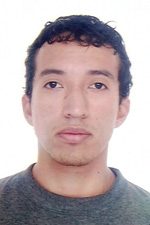IN DEPTH
Violence and environmental conflicts, the tragedy of Chocˇ

Edwin Novoa
The consequences of the armed conflict in Columbia have left millions of victims from wide range of human rights' violations, an issue that even though it is certainly central, has displaced the debate concerning the relationship between violence and environmental conflicts.
The Columbian pacific coast, and in particular, the Chocó department, is one of the most strategic and biodiverse ecosystems on the planet and the region is home to tropical rain forest and extensive watersheds historically inhabited by Afro-Columbian communities, as well as being the cradle of several indigenous peoples, ancestral inhabitants of the tropical rain forest.
For the ethnic groups who live here, the territory is equally, if not more important than life itself, given that it constitutes the setting in which all their rights merge as collective legal subjects, in other words, the right to a cultural identity, the right to autonomy (their own authorities and rules), the right to prior consultation and the right to their environmental and cultural heritage.
In this regard, Columbian law has established a high standard of formal protection over these lands, instigated under the 1991 Columbian Constitution and Law 70 of 1993 as well as Law 160 of 1994, which granted the title over the Chocó Department territories to the ethnic groups under the model of collective ownership.
Despite the formal nature of the protection of their rights, the reality on the ground in the territories is one of a complete lack of knowledge regarding rights and ethnic groups' lack of control over their ancestral lands.
The megadiversity associated with such a vast reservoir of natural resources, added to the geostrategic location of Chocó (the only Department with access to Atlantic and Pacific oceans), transform the area into a prize for the conflict and extraction of natural resources and, in this regard, the different armed actors who, over the past three decades, have imposed a violent regime in order to control the territory (it is used as a corridor for trafficking arms and drugs), displacing ethnic communities and obtaining control over its natural resources.
The biogeographical Chocó is a difficult area to access, so much so that for many generations it served as a refuge for Afro-Columbian communities fleeing slavery in search of refuge, one of the principal reasons why the presence of the Columbian state has been so discreet historically, making it the perfect setting for the activities of guerrilla and paramilitary groups, among others.
During the 1980's, guerrilla groups entered several of the watersheds in Chocó, where they found an excellent refuge due to the difficult conditions to access the area, actors who lived in relative peace with the ethnic groups. However, since the 1990's (principally since 1997 with the formation of the United Self-defense Forces of Columbia) paramilitary groups began making incursions into the area igniting major armed confrontations, massacres, massive displacement and in general, every class of human rights and international humanitarian law (IHL) violations.
The strategy of territorial control implemented by paramilitary organizations (besides the armed strategy) involves imposing development models by force in the dispossessed regions (stolen from ethnic groups) which are at loggerheads with the traditional methods. In the northern region of Chocó (Riosucio, Darién, Acandí, Unguía), this involved the mass extraction of timber from the tropical rain forest for export, later followed by the destruction of forests, savannahs and arid zones to transform vast areas of land into pasture land (potrerización in Spanish) and finally the introduction of monoculture (for example, oil palms, which in its day was even subsidized by the Government1) and extensive livestock breeding.
In other areas of Chocó (the Andágueda, Quitó, San Juan and to a lesser degree, the Atrato Rivers) different development models were introduced based on illegal open-pit mining practices using backhoes, dredgers and processing operations on the river banks involving the use of mercury2. This form of mining is completely illegal given the devastating environmental impact (contamination of rivers and soil, stripping vegetation cover, extinction of autochthonous species, among others), has been implemented over the past decade by guerrillas and criminal gangs and is currently experiencing uncontrolled growth due to the so-called Columbian mining "boom".
This complex situation was highlighted by the Constitutional Court of Columbia3, human rights and environmental organizations, as well as the very communities who find themselves displaced or confined to small sections of the territories. Notwithstanding, the State has yet to regain control over several areas of Chocó and in others where they have acquired control, they have left the door open for the possibility of mining projects approved by the environmental authorities. Given the above, the future does not look promising for ethnic communities. In addition, the region's environment is under threat.
[1] Jiguamiandó and Curvaradó cases, north Chocó.
[2] While ethnic communities engage in ancestral extraction of minerals such as gold, they do so on such a small scale, without chemicals or heavy machinery that these are considered sustainable practices.
[3] Sentence T-025, 2004 and Court Order Nº 004 and Nº 005, 2009, Constitutional Court.